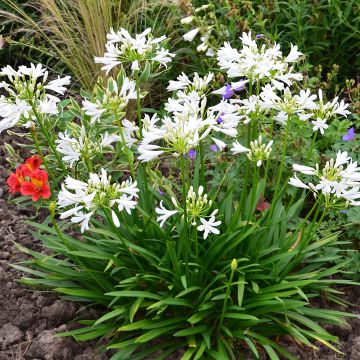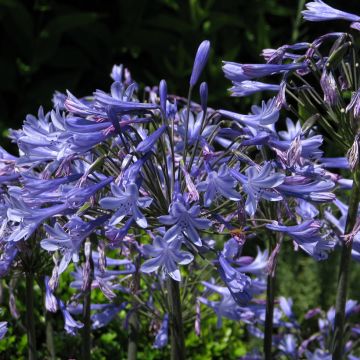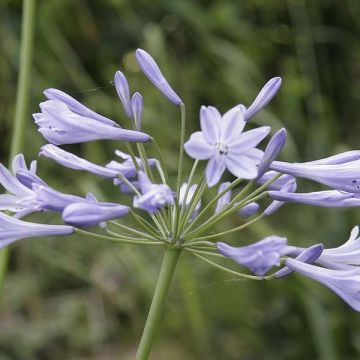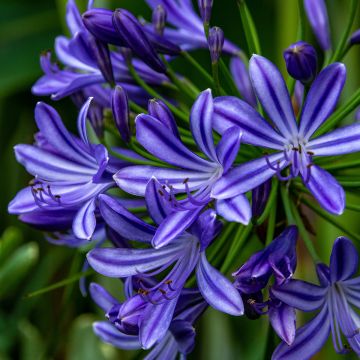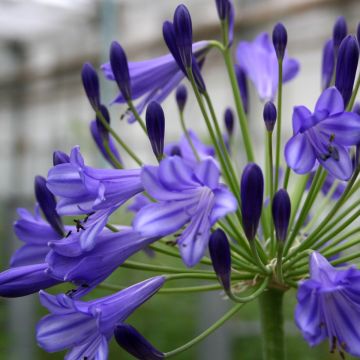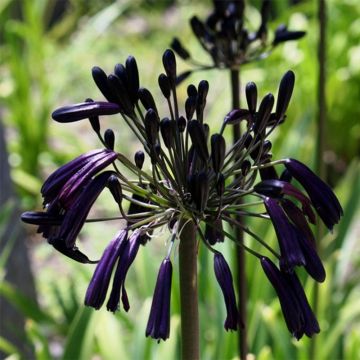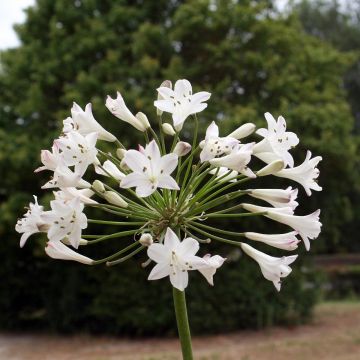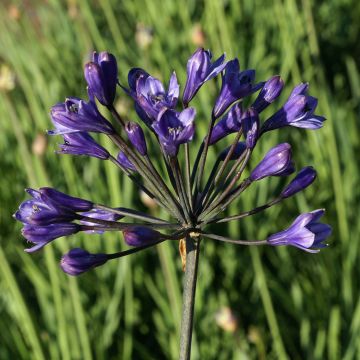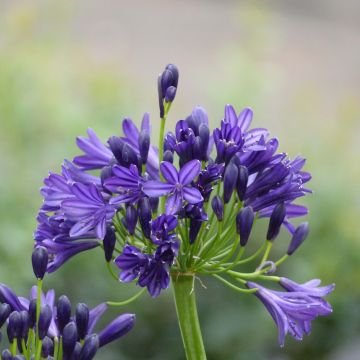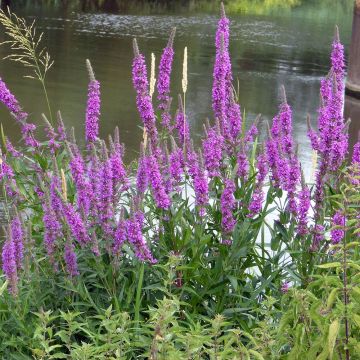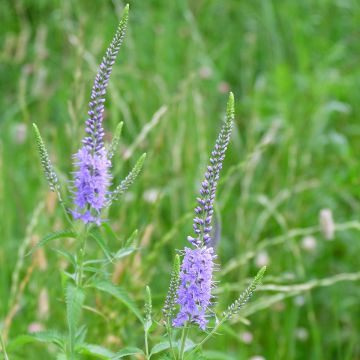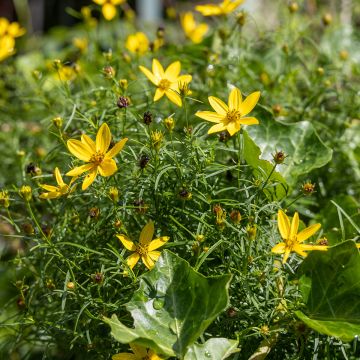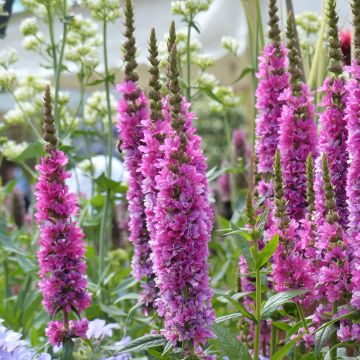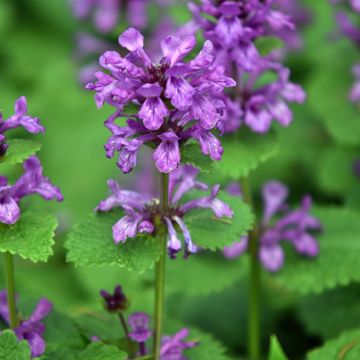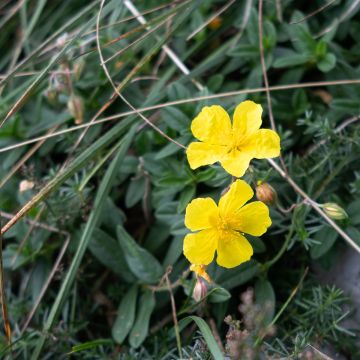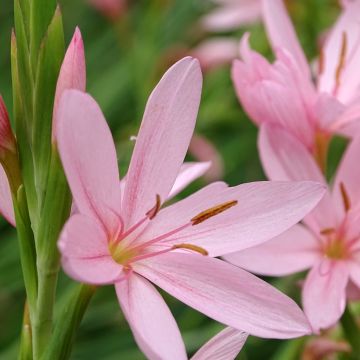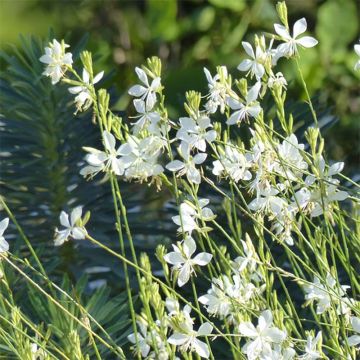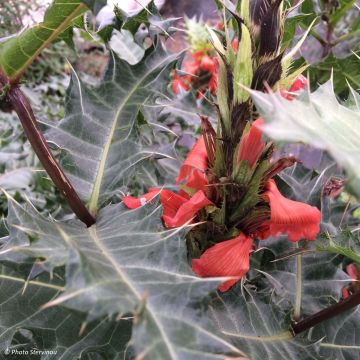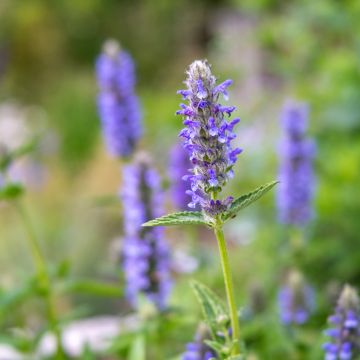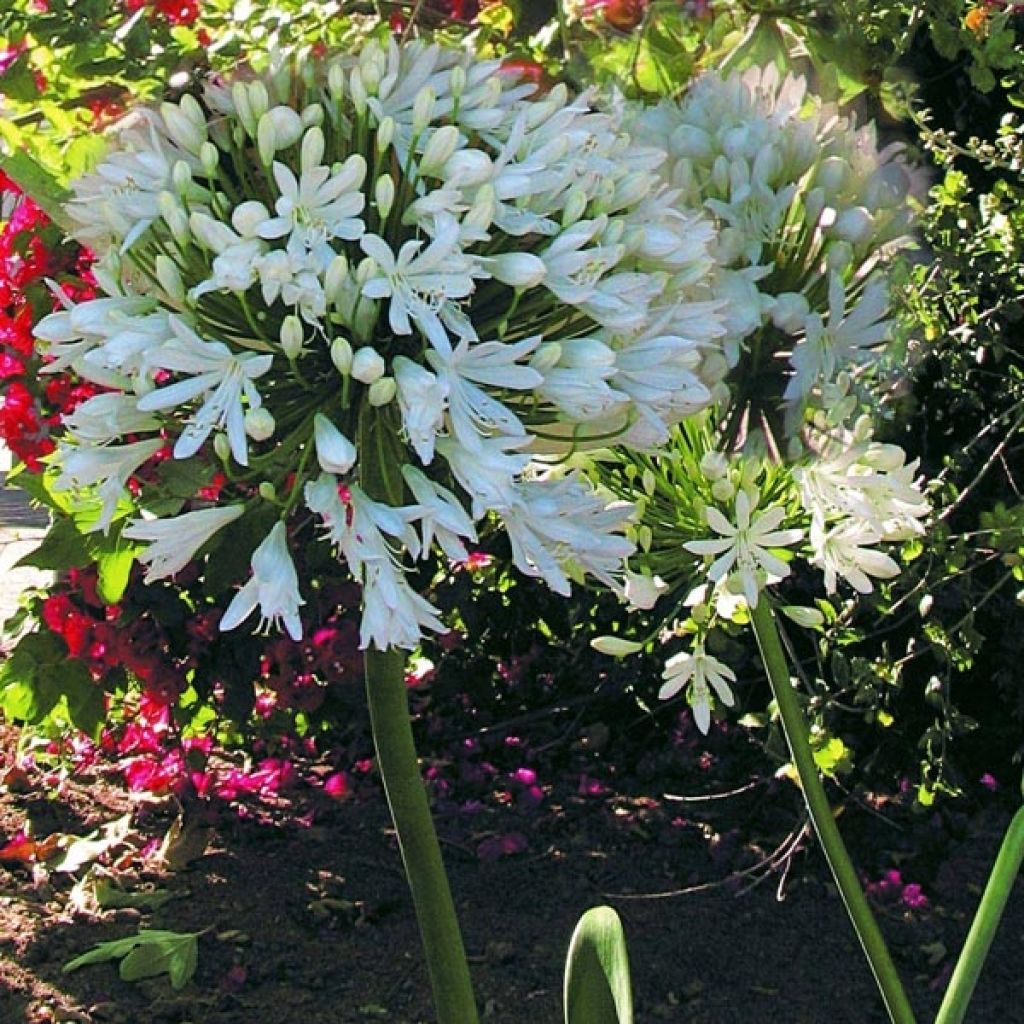

Agapanthus White Heaven
Agapanthus White Heaven
Agapanthus White Heaven
African Lily, Lily of the Nile
This item cannot be shipped to the selected country
Delivery charge from €5.90
Delivery charge from €5.90
More information
Schedule delivery date,
and select date in basket
This plant carries a 12 months recovery warranty
More information
We guarantee the quality of our plants for a full growing cycle, and will replace at our expense any plant that fails to recover under normal climatic and planting conditions.
From €5.90 for pickup delivery and €6.90 for home delivery
Express home delivery from €8.90.
From €5.90 for pickup delivery and €6.90 for home delivery
Express home delivery from €8.90.

Does this plant fit my garden?
Set up your Plantfit profile →
Description
The Agapanthus 'White Heaven' is a new variety of agapanthus. It produces immense, very dense, pure white umbels formed by numerous small semi-double stars. The plant is particularly floriferous and repeat flowering. It remains attractive for a long time as its flowers give way to attractive ornamental fruiting. This large perennial has deciduous to semi-evergreen foliage, depending on the climate, and is moderately hardy. It is an unusual and exquisite plant that looks great in flower beds and pots.
This hybrid agapanthus is a bulb from the Lily family. It is moderately hardy, surviving temperatures as low as -10°C (14 °F), and loses its foliage in autumn.
The 'White Heaven' variety of Agapanthus africanus is a stunning plant first discovered in the Netherlands. It is known for its remarkable abundance of flowers and huge inflorescences. The plant grows from a short rhizome with fleshy roots, forming a dense clump with slightly arching, medium green, ribbon-like leaves. When in bloom, it can grow up to 1m (3ft 4in) in height and 50 to 60cm (19.7 - 23.6in) in width. From July to September, the plant produces up to 30 very sturdy floral stems, each crowned with a dense umbel that is 20 to 24cm (7.9 - 9.4in) wide and contains up to 80 fully open white flowers.
The 'White Heaven' Agapanthus is aptly named; its pure and airy flowers create a heavenly atmosphere. It is often used in flower beds and can be surrounded by low-growing perennials with grey foliage, such as cerastiums, artemisias, creeping euonymus and aubrietas, or used to border paths, with the ground covered by creeping plants. Additionally, it blends perfectly with tall grasses like Panicum virgatum 'Dallas Blues' or with the astonishing foliage of Schizachyrium scoparium. It is also an excellent choice for a terrace in a pretty wide pot that allows it to produce many floral stems. This cultivation method has the advantage of being able to overwinter the plant in case of intense frost. It is a versatile plant that can thrive by the sea, in an English cottage, or even in a contemporary-style city garden. The flowers and leaves can be cut and placed in a vase, bringing freshness and originality to the house.
Report an error about the product description
Agapanthus White Heaven in pictures
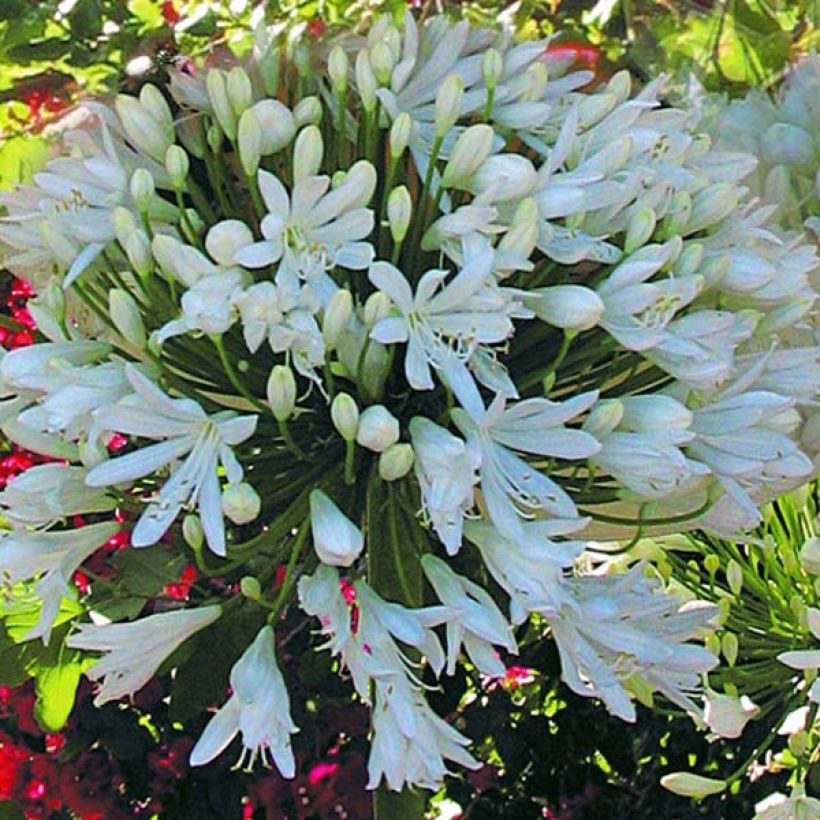



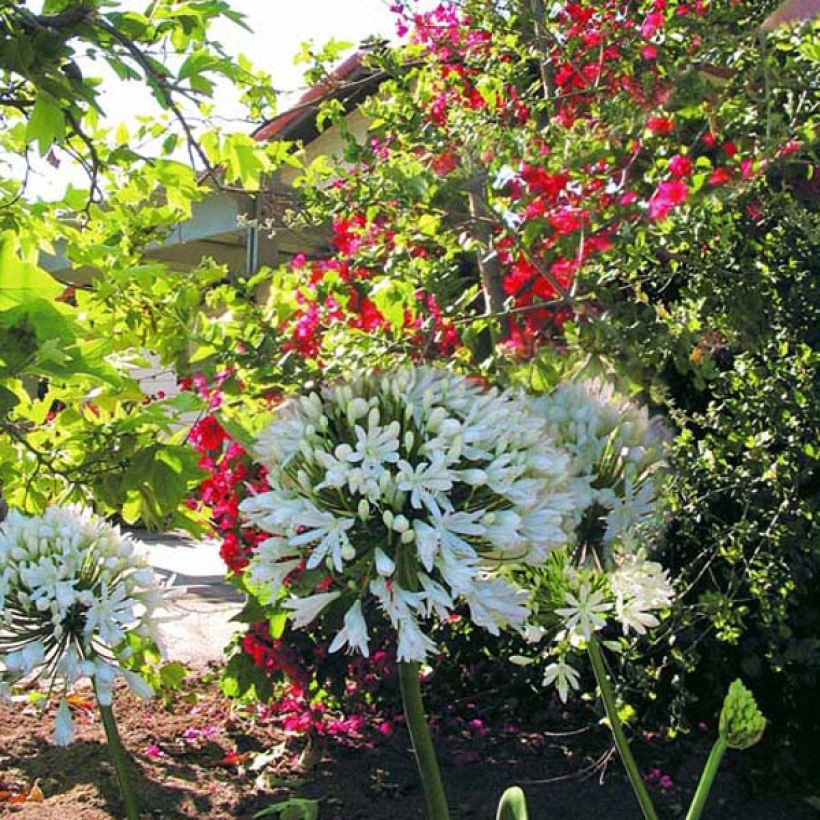

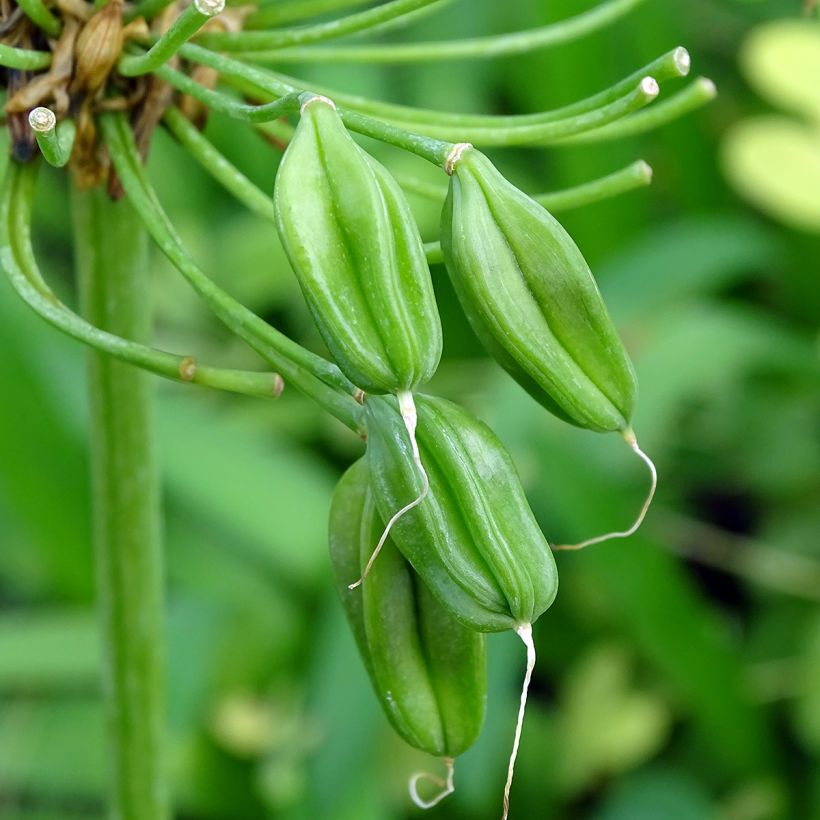

Flowering
Foliage
Plant habit
Botanical data
Agapanthus
White Heaven
Alliaceae - Liliaceae
African Lily, Lily of the Nile
Cultivar or hybrid
Other Agapanthus - Lily of the Nile
Planting and care
The 'White Heaven' Agapanthus is typically planted during spring. It thrives best in a warm, sheltered, south-facing location with plenty of sunlight. Plant it in a rich and moist but well-drained soil to promote its hardiness. If you have heavy soil, mixing pure gravel or coarse sand into the bottom of the planting hole is advisable. The base should be buried under 10 cm (3.9 in) of soil to help it withstand the cold better. Water the agapanthus regularly during growth, typically twice a week, but avoid watering it during winter. To protect the plant from wind damage, mulch the base with a layer of dead leaves about 20 cm (7.9 in) thick and cover it with a mesh. Snow can also provide excellent protection against excessive moisture and cold. In a pot, you should bring the plant indoors to protect it from severe frost in an unheated room. When planting, ensure that it's planted at a depth of 10 cm (3.9 in) in a mixture of leaf compost and compost. Once established in the ground, it's crucial to avoid disturbing the agapanthus. Remove faded leaves in autumn and cut off faded stems to prevent the plant from exhausting itself producing seeds.
Planting period
Intended location
Care
-
, onOrder confirmed
Reply from on Promesse de fleurs
Summer flowering perennials
Haven't found what you were looking for?
Hardiness is the lowest winter temperature a plant can endure without suffering serious damage or even dying. However, hardiness is affected by location (a sheltered area, such as a patio), protection (winter cover) and soil type (hardiness is improved by well-drained soil).

Photo Sharing Terms & Conditions
In order to encourage gardeners to interact and share their experiences, Promesse de fleurs offers various media enabling content to be uploaded onto its Site - in particular via the ‘Photo sharing’ module.
The User agrees to refrain from:
- Posting any content that is illegal, prejudicial, insulting, racist, inciteful to hatred, revisionist, contrary to public decency, that infringes on privacy or on the privacy rights of third parties, in particular the publicity rights of persons and goods, intellectual property rights, or the right to privacy.
- Submitting content on behalf of a third party;
- Impersonate the identity of a third party and/or publish any personal information about a third party;
In general, the User undertakes to refrain from any unethical behaviour.
All Content (in particular text, comments, files, images, photos, videos, creative works, etc.), which may be subject to property or intellectual property rights, image or other private rights, shall remain the property of the User, subject to the limited rights granted by the terms of the licence granted by Promesse de fleurs as stated below. Users are at liberty to publish or not to publish such Content on the Site, notably via the ‘Photo Sharing’ facility, and accept that this Content shall be made public and freely accessible, notably on the Internet.
Users further acknowledge, undertake to have ,and guarantee that they hold all necessary rights and permissions to publish such material on the Site, in particular with regard to the legislation in force pertaining to any privacy, property, intellectual property, image, or contractual rights, or rights of any other nature. By publishing such Content on the Site, Users acknowledge accepting full liability as publishers of the Content within the meaning of the law, and grant Promesse de fleurs, free of charge, an inclusive, worldwide licence for the said Content for the entire duration of its publication, including all reproduction, representation, up/downloading, displaying, performing, transmission, and storage rights.
Users also grant permission for their name to be linked to the Content and accept that this link may not always be made available.
By engaging in posting material, Users consent to their Content becoming automatically accessible on the Internet, in particular on other sites and/or blogs and/or web pages of the Promesse de fleurs site, including in particular social pages and the Promesse de fleurs catalogue.
Users may secure the removal of entrusted content free of charge by issuing a simple request via our contact form.
The flowering period indicated on our website applies to countries and regions located in USDA zone 8 (France, the United Kingdom, Ireland, the Netherlands, etc.)
It will vary according to where you live:
- In zones 9 to 10 (Italy, Spain, Greece, etc.), flowering will occur about 2 to 4 weeks earlier.
- In zones 6 to 7 (Germany, Poland, Slovenia, and lower mountainous regions), flowering will be delayed by 2 to 3 weeks.
- In zone 5 (Central Europe, Scandinavia), blooming will be delayed by 3 to 5 weeks.
In temperate climates, pruning of spring-flowering shrubs (forsythia, spireas, etc.) should be done just after flowering.
Pruning of summer-flowering shrubs (Indian Lilac, Perovskia, etc.) can be done in winter or spring.
In cold regions as well as with frost-sensitive plants, avoid pruning too early when severe frosts may still occur.
The planting period indicated on our website applies to countries and regions located in USDA zone 8 (France, United Kingdom, Ireland, Netherlands).
It will vary according to where you live:
- In Mediterranean zones (Marseille, Madrid, Milan, etc.), autumn and winter are the best planting periods.
- In continental zones (Strasbourg, Munich, Vienna, etc.), delay planting by 2 to 3 weeks in spring and bring it forward by 2 to 4 weeks in autumn.
- In mountainous regions (the Alps, Pyrenees, Carpathians, etc.), it is best to plant in late spring (May-June) or late summer (August-September).
The harvesting period indicated on our website applies to countries and regions in USDA zone 8 (France, England, Ireland, the Netherlands).
In colder areas (Scandinavia, Poland, Austria...) fruit and vegetable harvests are likely to be delayed by 3-4 weeks.
In warmer areas (Italy, Spain, Greece, etc.), harvesting will probably take place earlier, depending on weather conditions.
The sowing periods indicated on our website apply to countries and regions within USDA Zone 8 (France, UK, Ireland, Netherlands).
In colder areas (Scandinavia, Poland, Austria...), delay any outdoor sowing by 3-4 weeks, or sow under glass.
In warmer climes (Italy, Spain, Greece, etc.), bring outdoor sowing forward by a few weeks.


































